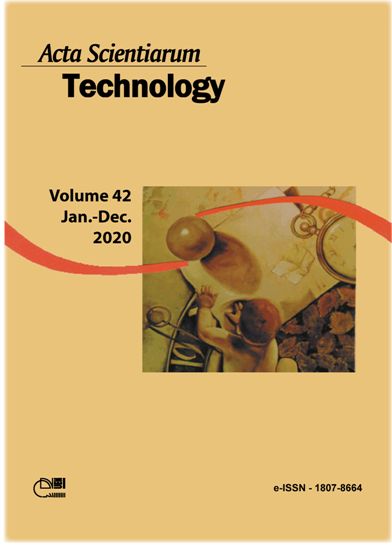Growth of Chlorella vulgaris using wastewater from Nile tilapia (Oreochromis niloticus) farming in a low-salinity biofloc system
DOI:
https://doi.org/10.4025/actascitechnol.v42i1.46232Keywords:
Aquaculture, bioremediation, microalgae, wastewater treatmentAbstract
The present study aimed to analyze the growth of Chlorella vulgaris in the effluent of a Biofloc Technology (BFT) system used in the Nile tilapia fingerlings farming. The conditions were cultivated by 10 days at 25 ± 2ºC, 90 μmol photons m−2 s−1 irradiance, under constant aeration (without addition of CO2), and with different BFT effluent proportions (0, 50, and 100%). After 24 hours of the inoculation that marked the beginning of the experiment, the development and multiplication of the cells were verified, demonstrating that the BFT effluent used in the Nile tilapia farming was favorable for the cultivation of the microalga Chlorella vulgaris. As expected, the Provasoli culture medium presented the best performance (1,520 ± 75 104 cells mL-1) in relation to the growth of the microalga. However, during the first four days of cultivation, C. vulgaris showed higher growth in treatments containing BFT effluent. C. vulgaris removed 93.6% of the nitrate contained in the BFT effluent. The results of the present study showed the potential use of C. vulgaris on Integrated Multi-Trophic Aquaculture with Nile tilapia fingerlings. In addition to removing nitrate and other nitrogen compounds, C. vulgaris biomass could be used to feed zooplankton or Nile tilapia larvae.
Downloads
Downloads
Published
How to Cite
Issue
Section
License
DECLARATION OF ORIGINALITY AND COPYRIGHTS
I Declare that current article is original and has not been submitted for publication, in part or in whole, to any other national or international journal.
The copyrights belong exclusively to the authors. Published content is licensed under Creative Commons Attribution 4.0 (CC BY 4.0) guidelines, which allows sharing (copy and distribution of the material in any medium or format) and adaptation (remix, transform, and build upon the material) for any purpose, even commercially, under the terms of attribution.
Read this link for further information on how to use CC BY 4.0 properly.











8.png)




